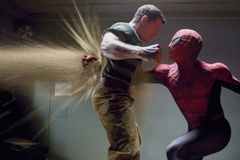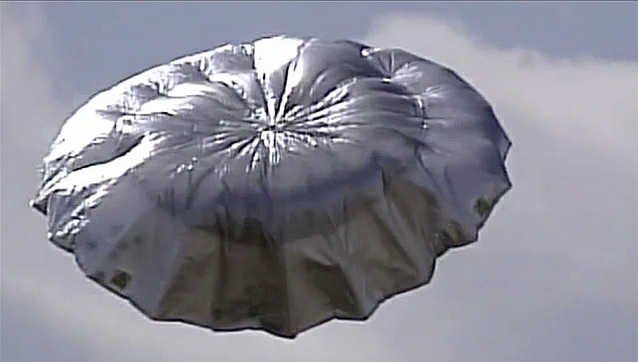

Spiderman is arguably the most popular cinematic superhero since Superman, and with the imminent release of the DVD of Spiderman 3 on October 30th, what better moment to do a little Spiderman 3 physics? In most successful movie franchises it’s hard for the sequels to match the original, and in the case of superhero action movies the cohesiveness of plot and dialogue tend to diminish in favor of ever more spectacular (and improbable) action sequences and special effects. Spiderman 3 is no exception to this phenomenon, however, that said, it’s still really fun to watch and the CG sequences are truly amazing. (check out the “Birth of Sandman” scene).
Now when analyzing the physics in a superhero fantasy obviously you have to suspend disbelief and accept the basic (impossible) premise of the movie if you want to have any fun. No matter how cool it would be, being bitten by a “genetically enhanced super spider” cannot change your own genetic structure and give you amazing super powers as it does Peter Parker. But at least he’s still humanoid—unlike the Sandman who seems to offer proof that the human soul exists; not just because he’s actually a nice guy deep down, but because you can blast him into a million little pieces (of quartz) thus destroying his body altogether, and yet he can reconstitute himself at will.
Allowing for such fantastic elements, it may be instructive to apply some basic Newtonian mechanics to a few of the action sequences in order to analyze Spiderman’s astonishingly resilient physiology.
We see in the climactic battle scene (scene 43 on the DVD), that Spiderman can survive a fall of 80 stories without a single broken bone, concussion, or presumably any internal bleeding. Using Newton’s Second Law (Fnet = ma) let’s calculate how much force the ground exerts on Spiderman upon impact.
First of all, for an 80 story plummet, Spidey will be close to his terminal velocity before he crashes. In the case of a skydiver, or a falling Spiderman, 60 m/s (about 130 mi/hr) is a reasonable and conservative estimate.
What forces are acting on our superhero during contact with the ground? There are only two: his weight force acting in a downward direction, and the upward force of the ground. It is the value of the force that the ground exerts on Spidey that we are concerned about. Applying the second law we get:
Fnet = Fground – mg = ma
where mg is Spiderman’s weight (m is his mass which we estimate to be about 70 kg and g is the acceleration due to gravity), and a is the upward acceleration that Spiderman undergoes as the ground brings him to an abrupt halt. Since most collisions with hard objects (like concrete) occur on time scales of approximately one one-hundredth of a second we can calculate Fground as follows:
Fground = mg + ma = mg + mΔv/Δt
= (70 kg)(9.8 m/s2) + (70 kg)(60 m/s)/0.01 sec ≈ 420,000 Newtons (that’s 47 tons!).
Spidey’s acceleration upon impact is 6000 m/s2 or 600 “g’s”. Since most bones will break if the body experiences forces exceeding 90,000 N, and concussions are pretty much inevitable for normal humans experiencing accelerations greater than 100 g’s we can already see that Spiderman has no ordinary skeletal system!
In particular consider Spiderman’s skull. It must be constructed of some truly phenomenal material. In Spiderman 3 our hero experiences at least a half dozen collisions of his head with various solid objects. In the most violent of these (scene 47), Spidey gets flung into a steel beam with a speed that we estimate to be at least 15 m/s. Since he is brought to a stop by the beam and almost all of the force is exerted directly on his head (in about 0.01 second), the force on his head will be about:
Fnet = ma = mΔv/Δt = (70 kg)(15m/s)/0.01 second = 105,000 N.
According to some experiments, a direct impact to the skull exceeding 873 N will always result in a fracture (in fact the skull may fracture when exposed to forces much less than that), but Spidey’s skull is capable of withstanding forces at least 120 times as big. I guess when M.J. says Peter is hard-headed she really means it! —Adam Weiner
__





![Homebuilt telescopes [foreground] atop Mauna Kea](https://www.popsci.com/wp-content/uploads/2019/03/18/3Y5JXT6QZK3M37INMRKLUVPJ4E.jpg?w=485)


